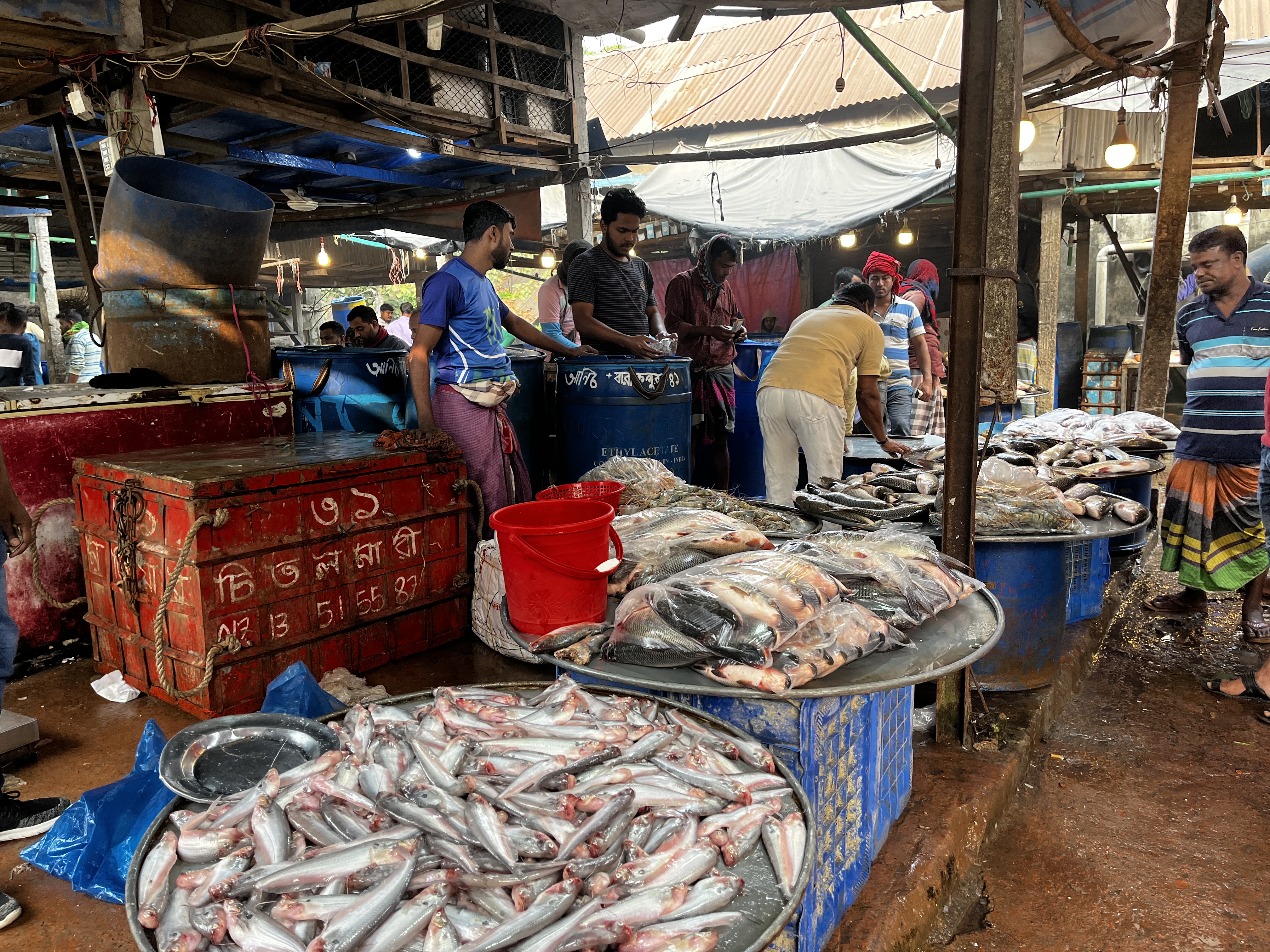
Despite substantial growth in the aquaculture sector through intensive farming practices, there has been a notable lack of emphasis on enhancing food safety across the fish supply chain, particularly concerning contamination with human pathogens, including multidrug-resistant organisms. The research team’s previous Fish Innovation Lab activity, Identifying Major Sources of Foodborne Pathogens in Bangladeshi Aquaculture Value Chains and the Most Cost-Effective Risk Reduction Strategies, revealed that 97% and 28% of fish samples (tilapia and pangas) obtained from cut-up tables—the point-of-delivery to customers in retail markets across Dhaka city—were contaminated with E. coli and Salmonella spp, respectively. Alarmingly, 58% of samples tested positive for extended-spectrum beta-lactamase-producing E. coli (ESBL-E. coli), which exhibit resistance to multiple antibiotics including some classified as critically important for human pathogens by the World Health Organization (WHO) Importantly, fish samples obtained from the cut-up tables showed a notably higher prevalence and abundance of E. coli and ESBL-E. coli in comparison to whole fish samples collected from vendors in the same retail markets. These findings highlight that the cut-up tables in wet markets are a significant source of microbial contamination of fish. Therefore, reducing the contamination levels of harmful pathogens in raw cut fish at the retail markets would lower the exposure to these organisms at the household level, resulting in a positive impact on consumers’ health.
The Improving Food Safety of Fish in Bangladesh team aims to evaluate the knowledge, attitudes, and practices of cut-up table workers and consumers in retail wet markets and link that data to the level of contamination of fish. A comprehensive understanding of their beliefs, motivations, and attitudes is crucial for the design and implementation of effective food safety and hygiene interventions in the markets. Furthermore, the team will evaluate the knowledge, attitudes, and practices of women in selected households who are responsible for processing and preparing fish for their families, including children under the age of 5. In both scenarios, the investigation will identify the factors that predispose individuals to invest efforts in adopting improved practices. Additionally, the research team will explore any potential barriers hindering the adoption of improved practices.
Activity objectives:
- Evaluate food safety and hygiene knowledge of consumers and knowledge, attitudes, and practices of cut-up table workers in retail fish markets.
- Analyze fish for E. coli and ESBL-E. coli counts before and after usual processing by cut-up tables.
- Assess practices of raw fish handling, cooking, and consumption in households with children under 5 years of age.
- Examine the barriers and challenges associated with uptake and sustainability of food safety and hygiene intervention strategies at cut-up tables in retail fish markets and households.
Planned outcomes:
- Perspectives of consumers and cut-up table workers on microbiologically safe fish at retail markets will be determined.
- The existing gaps in food safety and hygiene practices among cut-up table workers in wet markets will be identified.
- Household-level raw fish handling practices associated with exposure to foodborne pathogens, particularly among households with children under the age of 5, will be identified.
- The daily fish consumption (portion size) among children in the study setting will be determined.
- Potential challenges and barriers to the implementation of food safety and hygiene practices by cut-up table workers at wet markets and households will be determined.
- A dissemination workshop and training on safe food handling will be conducted.
The overarching goal of the Improving Food Safety of Fish in Bangladesh activity is to increase the availability of safe and nutritious fish for domestic consumers in Bangladesh, particularly targeting vulnerable groups such as people who are impoverished and malnourished, including women and children. Improving the microbiological safety of raw fish in the market and promoting safety practices in households would directly contribute to enhancing the nutritional status of children. Additionally, promoting and training on food safety practices will help in reducing illnesses associated with contamination from foodborne pathogens.
